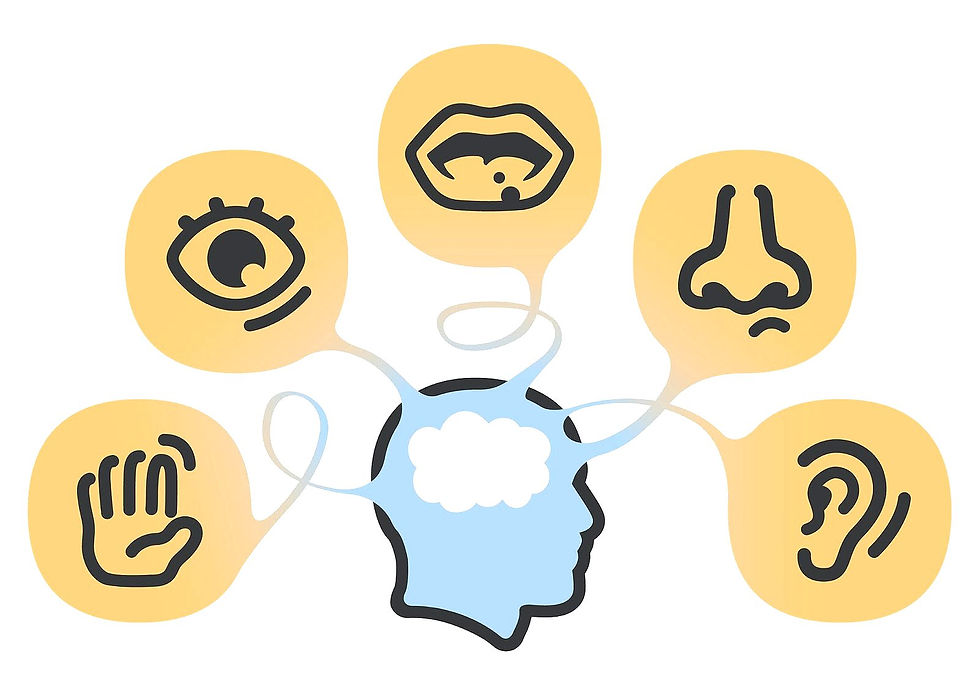A Beginner's Guide to Neurodiversity – Clear Autism
- clearautism

- Oct 27, 2020
- 4 min read
How it began
The term “neurodiversity” was coined in the late 1990s by Australian sociologist Judy Singer, who is autistic herself.
Singer, along with the American journalist Harvey Blume, and autistic activist Jim Sinclair, recognised that what we call “diversity”, i.e. the variety we observe and value around us, can also be applied to people whose brains are different. These variations include autism, ADHD, the various forms of ‘dys’ (-lexia, -praxia, -calculia etc.), learning disability and more.
We may not think about it too much, but we use biological diversity, in the form of biometrics, every day. We are all physically unique. If you have a biometric passport or a phone which uses facial recognition to unlock it, those are the principles which apply. The police have used fingerprints for identification purposes for well over a century.
Singer realised that, just as we all have different bodies, voices, eyes, and even walks we all have different brains, too. We all have our own experiences, strengths, and weaknesses. As with physical differences, problems arise when our brains diverge too much from the neurotypical “norm”.
The Social Model
The medical model of disability describes the disabled person as having some kind of deficit; the ultimate objective of the doctor is to remove or reduce that deficit and make the person as close to “normal” as possible.
Neurodiversity has its roots in the social model of disability, which considers disability to be a civil rights issue. The social model rejects the notion that an individual must be “normal” to enjoy the full range of human experience, arguing that an impairment should not constitute a barrier to inclusion or access.
Disability, therefore, stems largely from society’s failure to accommodate varying needs. That does not mean that all impairments are caused by external factors nor that we should not try to address them using medical means if beneficial to the individual. Rather, it means that whilst the person is experiencing the impairment society needs to work to support and accommodate them.
An example of this in the context of a physical disability might be of a wheelchair user who is unable to climb stairs. The medical model would seek to cure whatever it was that prevented them from using the stairs. This may be of long-term benefit but does not necessarily help the person "in the now".
The social model accepts that they cannot use the stairs at this time and ensures that ramps, lifts etc. are available, which are of immediate benefit to the person and are useful for as long as they are required. Furthermore, these same accessibility accommodations, which are better described as rights, will not only be beneficial to every other person with mobility issues, but also non-disabled people using pushchairs, carrying suitcases etc. now, and in the future.
Accessibility for Different Brains
Neurodiversity applies the same logic to people with different brains.
It is well known that autistic people, for example, are often disproportionately affected by their external sensory environments and can become overwhelmed to the point of meltdown. Anxiety is also a factor. However, because their difficulties are not easily recognised by most people (so-called “invisible disabilities”), their distress is frequently misunderstood and misinterpreted as “challenging behaviour”.
Neurodiversity advocates would consider these to be accessibility issues. There has been much comment in the news recently about how children with special educational needs (a problematic term in itself – in what way are their needs "special"?) are far more likely to be permanently excluded from schools. Few mainstream commentators drew attention to the fact that this was an accessibility problem and that the rights of these children to an education were being violated.
This gives a different perspective on autism "awareness” – is it enough, or should we be insisting on improving accessibility for autistic and other invisibly disabled people, in the same way we are coming to expect accessibility and understanding for more obvious disabilities?
A Different Kind of Spectrum
Most pro-neurodiversity people reject functioning labels (high or low) and the notion of a linear spectrum of autism (mild to severe). Many consider the autistic spectrum to resemble a continuous colour wheel:

This is an example of a non-linear spectrum. For autism, each colour would represent elements like external or internal sensory sensitivities, emotional sensitivities, receptive or expressive communication ability, and more.
This is in no way a denial of disability.
On the contrary, it is an understanding that different people need different types of support - and that mental health support and physical health support are equally important. It is an understanding that disability is not a competition and that society has a significant role to play in how ‘disabling’ an individual’s impairments are.
It is an understanding that this terminology is not only outdated but also negates the complex interaction between a person’s aptitudes, their challenges, their abilities, their disabilities, and their life experience.
It is an understanding that if a person’s needs are “invisible”, that does not mean they are not there, it simply means that most people do not have the experience or expertise to recognise them. For example, autistic adults without a learning disability (so-called “high-functioning”) are nine times more likely to die by suicide. There is nothing “mild” about those statistics. It is often pointed out that “high functioning” is used to deny services and that “low functioning” is used to deny agency.
“Neurominorities”
Ultimately, neurodiversity helps us to understand that everyone has different experiences based on how their brains work. “Neurodivergent” people (in the neurological minority) experience difficulties that “neurotypical” people (in the neurological majority) do not.
Any difference, whether it is in the brain or in the body, can result in disability, and it is important for all of us to recognise that improving accessibility and support for people with so-called invisible disabilities will create more acceptance.
This is a modified, slightly longer version of an article I wrote for the website Learning Disability Today in September 2019. That version can be found here:
With sincere thanks to Quinn Dexter aka Autistamatic, Breige Harvey and Helen Rottier. I am grateful for your insight and guidance.



Comments